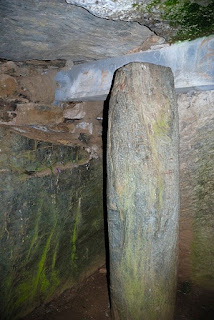The island of Anglesey in North Wales is rich with ancient monuments. There are approximately 30 Neolithic / Bronze age burial chambers on the island, several ancient settlements, and Anglesey standing stones are abundant. On June 2019, archaeologists are excavating a 4,000-year-old burial mound on this British island which connected to the mysterious order of magical priests known as the Druids.
The researchers are not really aware of their purpose and they have yet to understand many of their secrets, but it is clear the burial mound had to do with some kind of pagan / pre-Christian worship.
The burial mound is much older than the Druids — who lived about 2,000 years ago — and the excavations have cast new light on the ancient inhabitants of the island of Anglesey. Although no archaeological evidence of the Druids has ever been found, generations of writers have portrayed them as the religious leaders of the Celts, a Bronze Age people who spread across Europe about 3,000 years ago.
Bryn Celli Du is one of the most impressive and evocative prehistoric monuments on the island. Excavated between 1928 and 1929, the 5,000-year-old tomb’s entrance tunnel aligns with the midsummer Sun at dawn. The reconstructed mound and passage grave appears similar to what it would have looked like when it was built.
An unusual feature of the chamber inside the tomb is a large free-standing pillar. This wasn't tall enough to have supported the roof, and seems to be neatly sculpted to be almost circular in shape, and it has a rounded top.
The similarity of the markings on the surface to the bark of a tree have recently led some to believe that this was a petrified tree trunk. However, although the Anglesey geology is complex, there are no deposits on the island or nearby mainland that would contain plant fossils of this type.
University of Cardiff archaeologist Ffion Reynolds has led excavations at Bryn Celli Ddu for the past four years, and her team will complete a fifth year of excavations at the site — which includes the burial mound — in early July.
Reynolds, who also works for the Welsh heritage agency Cadw, told Live Science that the excavations of the burial mound were now almost complete, and scientific tests would now help to determine the presence of any human remains there.
Sources:
Pic Source:










Please don't put your website link in Comment section. This is for discussion article related only. Thank you :)